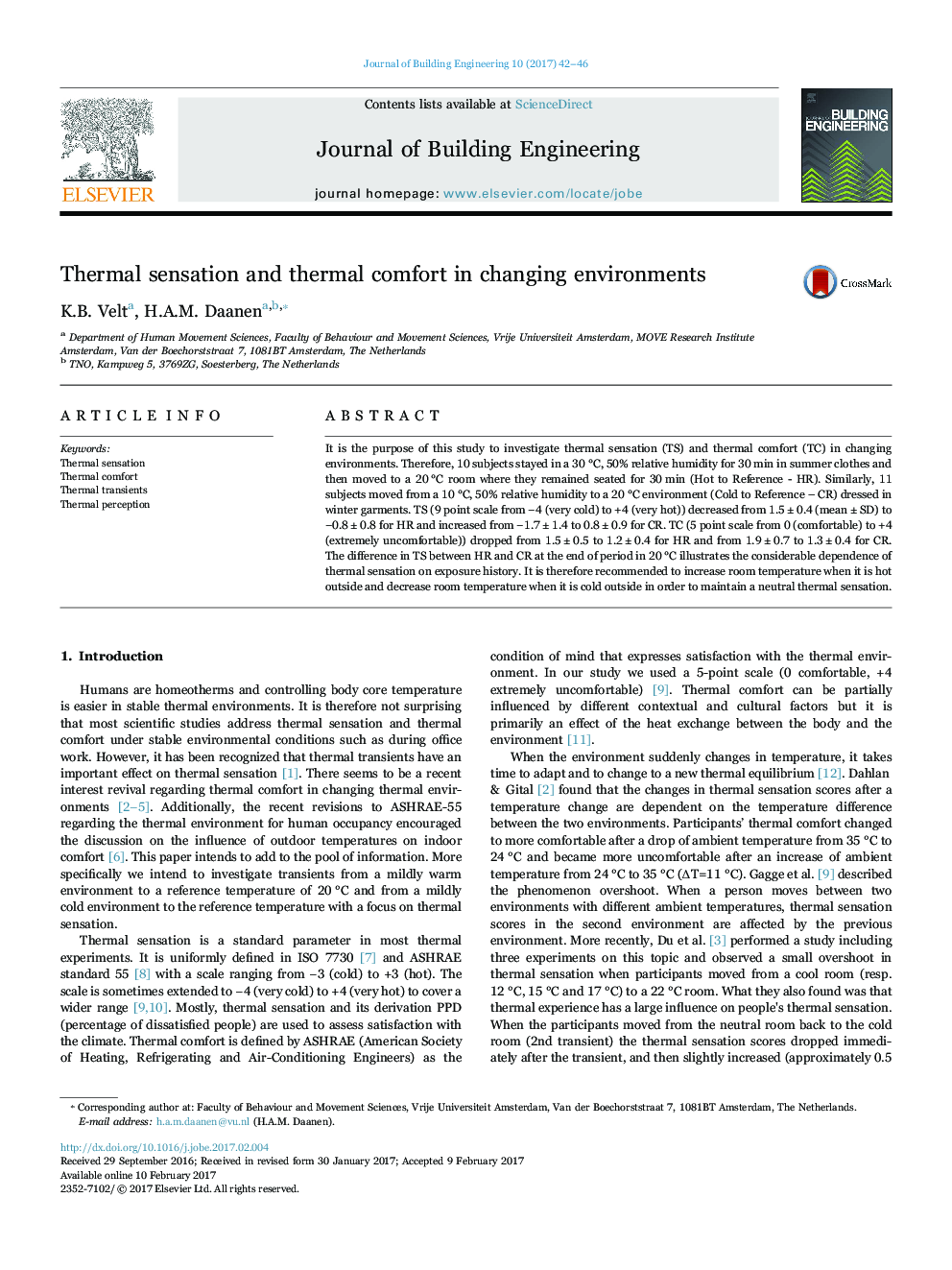| Article ID | Journal | Published Year | Pages | File Type |
|---|---|---|---|---|
| 4923091 | Journal of Building Engineering | 2017 | 5 Pages |
Abstract
It is the purpose of this study to investigate thermal sensation (TS) and thermal comfort (TC) in changing environments. Therefore, 10 subjects stayed in a 30 °C, 50% relative humidity for 30 min in summer clothes and then moved to a 20 °C room where they remained seated for 30 min (Hot to Reference - HR). Similarly, 11 subjects moved from a 10 °C, 50% relative humidity to a 20 °C environment (Cold to Reference - CR) dressed in winter garments. TS (9 point scale from â4 (very cold) to +4 (very hot)) decreased from 1.5±0.4 (mean±SD) to â0.8±0.8 for HR and increased from â1.7±1.4 to 0.8±0.9 for CR. TC (5 point scale from 0 (comfortable) to +4 (extremely uncomfortable)) dropped from 1.5±0.5 to 1.2±0.4 for HR and from 1.9±0.7 to 1.3±0.4 for CR. The difference in TS between HR and CR at the end of period in 20 °C illustrates the considerable dependence of thermal sensation on exposure history. It is therefore recommended to increase room temperature when it is hot outside and decrease room temperature when it is cold outside in order to maintain a neutral thermal sensation.
Related Topics
Physical Sciences and Engineering
Engineering
Civil and Structural Engineering
Authors
K.B. Velt, H.A.M. Daanen,
